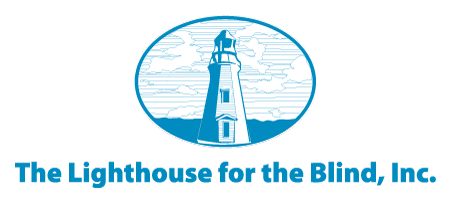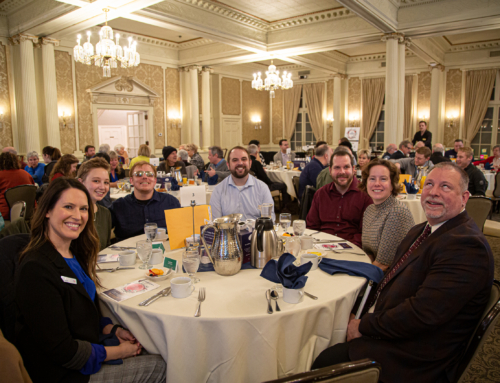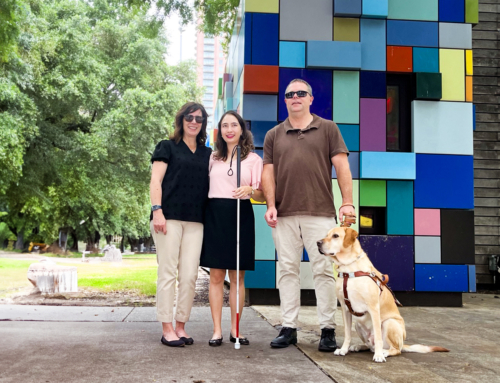Last year, Ameican Council of the Blind’s Director of Advocacy and Governmental Affairs, Eric Bridges, worked in conjunction with the Office of Congresswoman McMorris-Rodgers on promoting H.R 4087, the Prescription Drug Labeling Promotion Act of 2012, to ensure that people who are blind or visually impaired have full access to the information included on their prescription drug labels. Eric reached out to the Lighthouse’s own Vice President of Government Affairs Paula Hoffman, asking for stories from employees of the Lighthouse who had been impacted by prescription medicines not being labeled in an accessible way. Paula works with our representatives and senators on addressing critical service needs and was excited to work in this initiative. Paula notes:
“It seems that having the pharmacist read a label aloud was deemed as accessible by the pharma industry. There are many reasons why that is not a successful practice. This is an issue for blind and Deaf-Blind people as well as for others, such as seniors.”
Congresswoman McMorris-Rodgers represents Washington’s District 5, which includes Spokane and is home to Inland Northwest Lighthouse (INL). Paula met with several of our blind and low-vision employees at INL about their experiences and compiled them in a letter:
“One fully blind individual reported an extremely adverse reaction to taking what he thought was his usual pain medication, Vicodin. He didn’t realize and the pharmacist did not inform him that he had changed his prescription from Vicodin to Vicodin #10, a far more potent version, and he was seriously incapacitated for three days as a result.”
The employees’ experiences spoke to the fact that lack of access to this information is more than an inconvenience — it can result in loss of privacy, strains in personal relationships, detrimental effects to a person’s overall health, and in some cases serious injury.
Paula, along with Lighthouse President and CEO, Kirk Adams, visited Congresswoman McMorris-Rodgers’ office in Spokane and met with staff to discuss the issue. The bill, House Resolution (H.R.) 4087, recently passed the Senate.
Although the bill does not require accessible labeling, it does set up a study group comprised on consumers, representatives from organizations, and members of the pharma industry to come up with best practices/solutions. The group would consider options including but not limited to:
- Enhanced visual aids such as large print font, sans-serif font, and high contrast printing.
- Non-visual aids such as braille.
- Auditory aids such as digital voice recorders attached to pill bottles, (i.e.-‘talking bottles’) that provide audible label information.
- Radio Frequency Identification (RFID) tags or auxiliary smart labels, which are programmed, printed, and affixed to a prescription label container by a pharmacist.
After pharmacies have had the opportunity to adopt the guidelines, the Government Accountability Office (GAO) will review the degree to which pharmacies are in compliance. They will examine whether the blind or visually impaired still lack safe and independent access to prescription drug labeling and issue a report to Congress on the remaining gaps and the scope of the problem.





